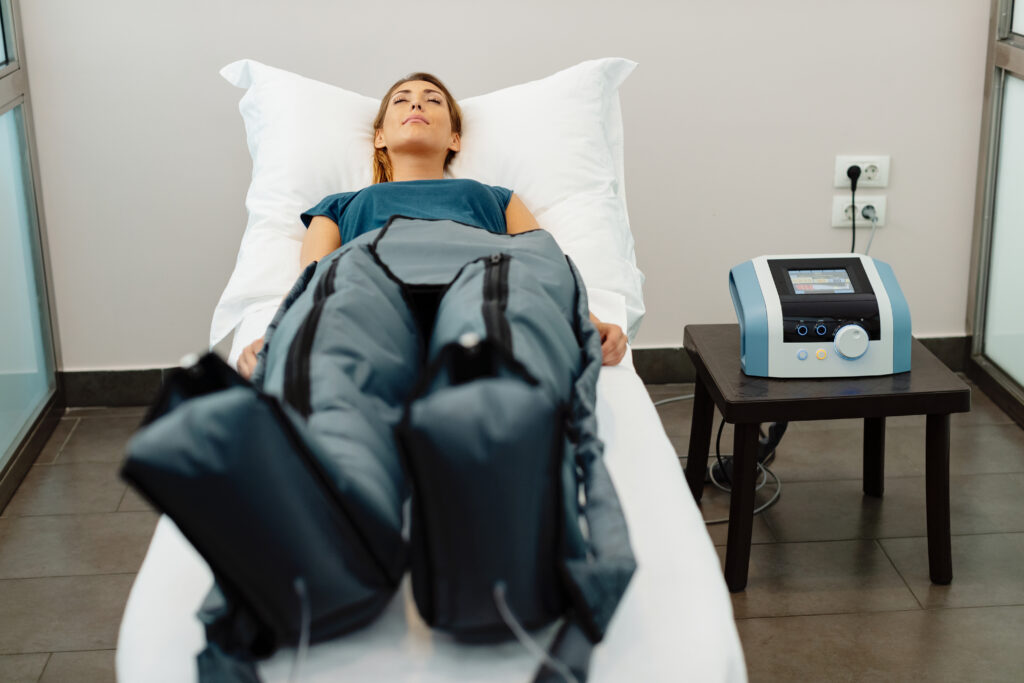In the age of wearable tech and social media-driven recovery trends, fitness enthusiasts are bombarded with countless methods to speed up post-workout recovery. From submerging in ice-cold water to slipping into air-filled compression boots, and supplementing with creatine, the question remains: Which tools actually work—and are worth your time and money?
Here’s what the science says about these three popular recovery strategies.
Cold Plunges (Cold Water Immersion)
What it is: Cold water immersion (CWI), commonly called a cold plunge, involves submerging the body in water between 10–15°C (50–59°F) for 5–15 minutes post-workout.
Scientific Evidence
- Reduced Muscle Soreness (DOMS):
A 2022 systematic review found that CWI significantly reduces delayed onset muscle soreness (DOMS) 24–96 hours after exercise, particularly when done within an hour of training (Hohenauer et al., 2022). - Blunted Hypertrophy Signals?
However, CWI may impair muscle growth adaptations. A study published in Journal of Physiology showed that cold immersion blunted long-term hypertrophy and strength gains by reducing muscle protein synthesis (Roberts et al., 2015).
Best Use Case
Cold plunges are best for short-term recovery when training multiple times per day, during competition, or when soreness is limiting performance—not during bulking or hypertrophy phases.

Compression Boots (Pneumatic Compression Therapy)
What it is: Devices like Normatec or Rapid Reboot use air pressure to rhythmically compress the limbs to promote blood flow and reduce inflammation.
Scientific Evidence
- Improved Perceived Recovery:
A 2020 review in Frontiers in Physiology concluded that pneumatic compression may improve subjective recovery and reduce muscle stiffness, but effects on actual performance markers were modest (MacRae et al., 2020). - Blood Flow Enhancement:
Compression boots may enhance venous return and lymphatic drainage, which helps clear lactate and inflammatory byproducts from training.
Best Use Case
Great for endurance athletes or lifters in high-volume training blocks. They support recovery without negatively affecting adaptation.
Creatine Monohydrate
What it is: A naturally occurring compound stored in muscle cells that helps regenerate ATP, the energy currency used during explosive movements.
Scientific Evidence
- Muscle Recovery and Damage:
Research shows creatine supplementation reduces muscle damage markers (like creatine kinase) and improves recovery of strength post-exercise (Cooke et al., 2014). - Enhances Muscle Protein Synthesis:
Creatine has also been linked to increased satellite cell activation, which aids muscle repair and growth (Safdar et al., 2008). - Endurance and Hydration Benefits:
It also supports glycogen replenishment and may even help retain intracellular water, aiding in hydration and recovery after endurance efforts.
Best Use Case
Ideal for both strength and cardio athletes. Creatine supports long-term recovery and adaptation, making it a staple supplement for anyone training regularly.
What’s Worth It?
| Recovery Tool | Best For | Backed by Research? | Use With Caution? |
|---|---|---|---|
| Cold Plunges | Short-term soreness relief | ✅ Yes | ⚠️ May blunt hypertrophy |
| Compression Boots | Circulation & perceived relief | ✅ Mild benefit | ❌ Safe to use frequently |
| Creatine | Muscle repair, strength gains | ✅ Strong support | ❌ Safe, long-term use |
Bottom Line: Recovery Tools That Work
While cold plunges may be effective for short-term relief and reducing soreness, they can interfere with muscle-building goals if used too often. Compression boots offer mild physiological benefits but strong perceived recovery. Creatine, on the other hand, stands out as the most science-supported, long-term recovery aid that helps with both strength and endurance training.
If your goal is to optimize performance and stay consistent in the gym, combining a smart training program (using Jefit), get solid sleep, nutrition, and the right recovery tools can make all the difference.
Jefit: Your Ultimate Strength Training Companion
If you’re committed to building muscle, gaining strength, and tracking your progress effectively in 2025, the Jefit strength training app is the essential tool to help you crush your fitness goals. With over 20 million downloads and 12+ million active users, Jefit ranks among the best strength training apps available today. Named the Best Fitness App of 2024 and featured in Men’s Health, PC Magazine, and USA TODAY, Jefit combines expert-built workout programs, advanced gym performance tracking, and a supportive community to help you stay accountable and motivated. Whether you’re looking to follow a scientifically-backed muscle-building plan, monitor your lifting progress, or optimize your training intensity, Jefit gives you everything you need — all in one place.
References
- Hohenauer, E. et al. (2022). Effects of cold-water immersion on recovery following exercise-induced muscle damage. Sports Medicine. PubMed
- Roberts, L. A. et al. (2015). Post-exercise cold water immersion attenuates acute anabolic signaling and long-term adaptations in muscle to strength training. J Physiol, 593(18), 4285–4301. PubMed
- MacRae, B. A. et al. (2020). The effects of compression garments on recovery following exercise: a meta-analysis. Front Physiol, 11, 915. PubMed
- Cooke, M. B. et al. (2014). The effects of creatine supplementation on muscle damage and recovery. J Strength Cond Res, 28(5), 1361–1370. PubMed
- Safdar, A. et al. (2008). Global and targeted gene expression and protein content in skeletal muscle of young men following resistance exercise with creatine supplementation. Am J Physiol, 294(1), R180–R188. PubMed
- The New Rules of Strength Training in 2026 - December 24, 2025
- Fibermaxxing: Viral Nutrition Trend You Should Know - December 17, 2025
- Hybrid Metabolic Strength Training for Faster Results - December 10, 2025
